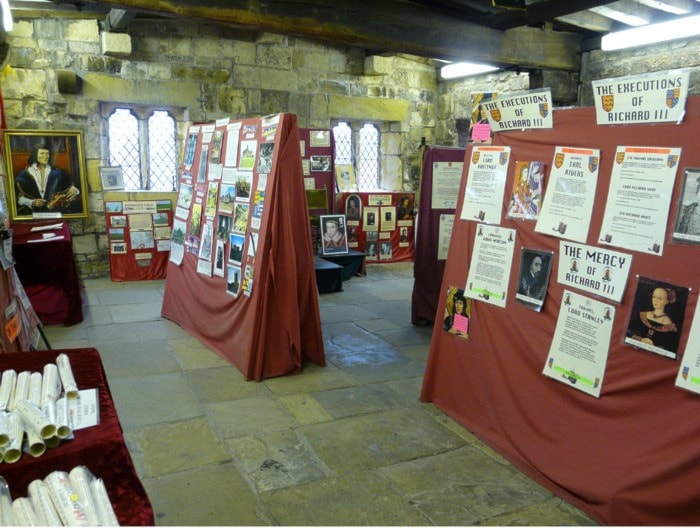YORK, England — Marvellous writer, Shakespeare.
Not such a dab hand with historical accuracy, though.
Case in point: Richard III. Shakespeare has the last Plantagenet king down as being a hunchback and a monster whose crimes included the murder in the Tower of London of 12-year-old Edward and 10-year-old Richard, who were the two legitimate claimants to the English throne on the death of their father, Edward IV.
Nastier still, the man who made himself king was supposed to be safeguarding the two princes, who were his nephews.
Oh, and he also had his brother, the Duke of Clarence, drowned in a barrel of wine.
Bollocks, according to the Richard III Museum.
Shakespeare was working from historical sources friendly to or controlled by Henry Tudor, the man who won the crown from Richard at the Battle of Bosworth Field and became Henry VII.
(Another Shakespearean inaccuracy, according to the museum: Richard never said, "My kingdom for a horse." His last words were, "Treason, treason, treason, treason, treason!")
Henry VII begat Henry VIII who begat Elizabeth I, whose reign covered most of Shakespeare's working years. Playwrights in Tudor times didn't diss the monarch, so even if the Bard of Avon knew a different story he was unlikely to tell it.
But this five-century cover-up (Richard died in 1485) rankles a certain type of Englishman, leading to the formation the Society of Friends of King Richard III. One of its number, Michael Bennett, has gone to the trouble of creating the Richard III Museum.
The museum itself is strange and wondrous. Or tacky, depending on your inclinations. It's in the apartments above Monk Bar, one of York's four ancient city gates, built in the early 1300s.
From the street it's reached by a narrow stone stairway in the gate wall, and each of its three small floors is heavy with the building's age. The fact that the museum is little known and gets only about 13,000 visitors a year means you'll likely to have the place to yourself, which adds to the atmosphere.
On the other hand, the floors are lit with fluorescent strip lights and the displays consist of Bennett's notes typed up neatly, laminated and stuck on boards along with various press clippings.
There's a 10-minute audio "trial" in which Richard justifies his conduct before a judge and prosecutor (and claims that it was the Duke of Buckingham, once Richard's right-hand man, who was responsible for the princes' deaths).
A nice flourish is the series of front-page headlines torn from the tabloids of the late 1400s, chronicling Richard's rise and fall: "Official: It's Tricky Dicky!," "Where Are the Princes, Richard?" and "Yorked! King of England in Death Shock! Unknown Welshman Seizes Crown!"
Another of York's ancient gates, Micklebar, is also open to visitors. It's operated by the people who run the city's Jorvik Viking Museum, and they bring to it the same professional slickness that's made Jorvik such an international hit.
But it lacks the mustiness, quirkiness and passion of Monk Bar, and it costs a pound more.
Access
For more information on the Richard III Museum visit its website at www.richardiiimuseum.co.uk.
For information on travel in England go to Visit England's website at www.visitengland.com.
